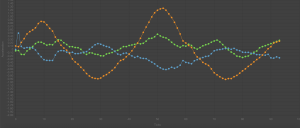This week I worked on connecting to the GearVR controller via Python. This would use the laptop as the central device in the low-energy bluetooth connection with the controller, the peripheral device.
I tested out a several different Python packages that would meet the requirements of:
-Scan for nearby BLE devices and view peripheral services and characteristics
-Connect to device
-Read and Write to characteristics
-Enable and receive notifications from device
I ended up choosing a package named Bleak (https://bleak.readthedocs.io/en/latest/). From there, I was able to scan for the GearVR and view the available services. The usual services found in most bluetooth devices were listed, such as battery life and device info, but there was one service with an un-stringified hex. I assumed that was where the sensor related characteristics were located.
The next step was to connect to the controller. I was only able to successfully connect to the controller using my laptop for approximately 20-30 seconds before the connection was dropped by the controller. I also tried writing code so that I could enable notifications and write commands to characteristics during the time that the connection was stable. The ultimate dagger was when enabling notifications, I would get a BLE error code that ended up being a system error from my operating system. After doing some research online, we found out that it was specifically designed to be connected with Samsung products through their application, so my Windows system trying to enable BLE notifications was getting denied.
I tried another package, PyBluez, which also failed due to the same error. The direct bluetooth connection approach with the laptop wasn’t an option for this particular controller.


